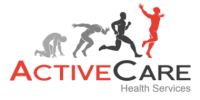History of Chiropractic Care Copy

Hot, muggy summers can bring about significant growth issues in your greenery enclosure. While summer fungus–such as the scandalous fine mildew–might not be specifically deadly to your plants, it can bring about compelling scourge that spreads quickly and quickens fall lethargy. What’s more, if left untreated, scourge can at last murder a plant. Try not […]
History of Chiropractic Care Copy

Hot, muggy summers can bring about significant growth issues in your greenery enclosure. While summer fungus–such as the scandalous fine mildew–might not be specifically deadly to your plants, it can bring about compelling scourge that spreads quickly and quickens fall lethargy. What’s more, if left untreated, scourge can at last murder a plant. Try not […]
History of Chiropractic Care Copy

Hot, muggy summers can bring about significant growth issues in your greenery enclosure. While summer fungus–such as the scandalous fine mildew–might not be specifically deadly to your plants, it can bring about compelling scourge that spreads quickly and quickens fall lethargy. What’s more, if left untreated, scourge can at last murder a plant. Try not […]
History of Chiropractic Care

Hot, muggy summers can bring about significant growth issues in your greenery enclosure. While summer fungus–such as the scandalous fine mildew–might not be specifically deadly to your plants, it can bring about compelling scourge that spreads quickly and quickens fall lethargy. What’s more, if left untreated, scourge can at last murder a plant. Try not […]
